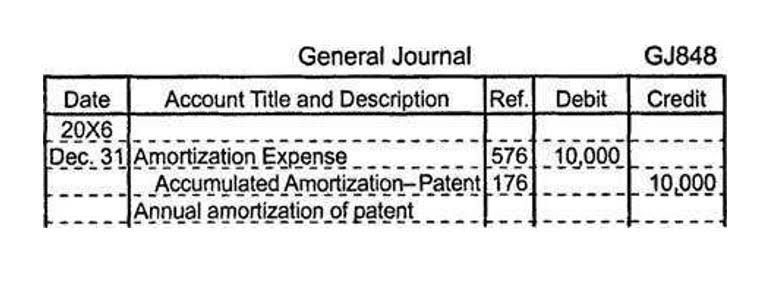
Fund accounting emphasizes accountability rather than profitability and is used by nonprofit organizations and by governments. Nonprofit organizations typically use a fund accounting system, which segregates financial resources into separate funds, each dedicated to specific purposes or programs. This separation allows nonprofits to track the financial performance and accountability of each fund independently. Common funds in nonprofit accounting include the general fund, program funds, and restricted funds, each serving distinct objectives.
- Luckily, here at Jitasa, we don’t think nonprofit accounting is tedious at all!
- They are also subject to specific regulatory and reporting requirements, including filings like the IRS Form 990, which are not applicable to for-profit entities.
- No matter how big or small nonprofits are, internal controls are essential for effective nonprofit accounting.
- The Internal Revenue Service (IRS) is responsible for overseeing these organizations and ensuring they comply with applicable tax laws.
- It also more accurately captures your ‘economic reality’ and helps you predict your finances better.
- Your organization’s budget is free to evolve further into the year you get, so don’t feel like you have to remain rigid with your initial plan.
- And while many aspects are the same between charitable entities and commercial businesses, other elements are quite different indeed, down to their very reason for existing.
Leveraging Nonprofit Software
- But over time, you should look for ways to reduce those costs and put the majority of your funding toward your programs.
- Find out whether somebody is already providing the service you intend to offer.
- The course addresses the similarities and differences in accounting and reporting for not-for-profit and government entities.
- This allows donors, board members, and other stakeholders to assess the organization’s performance and financial stability.
- Alex loves to break down IT and financial concepts to make them easy to understand and to apply to real-life situations.
- So check with your tax/legal team to make sure you’re prepared for any potential tax bills.
Internal controls don’t mean that you don’t trust your organization’s staff members. In accordance with these standards, there are several types of documentation that your organization should be aware of. We’ll walk through the various types of documents that your finance department will likely be working with most frequently. Members of the task force are available for presentations relating to financial accountability issues by contacting us.

Set up a reporting system.
By leveraging modern tools, establishing robust processes, and continually educating team members, a nonprofit can effectively manage its finances. As a result, it can prove its fiscal responsibility to its donors and governing bodies, ultimately helping to sustain its operations and further its mission. Remember, accounting is not just about crunching nonprofit bookkeeping numbers—it’s about telling a story of your nonprofit’s stewardship, impact, and commitment to its cause. By following these best practices, your nonprofit can maintain strong financial health and continue effectively serving your mission. These include faith-based groups, government cooperatives, and subsidiaries of other nonprofits.
Small Business Bookkeeping (2024 Guide) – Forbes Advisor – Forbes
Small Business Bookkeeping (2024 Guide) – Forbes Advisor.
Posted: Wed, 17 Apr 2024 07:00:00 GMT [source]
Nonprofit Accounting Statements and Reports

Moreover, nonprofit accounting is regulated by a distinct set of legal and financial standards that require detailed reporting and compliance. Understanding these requirements is integral to the management and operation of any successful nonprofit organization. Nonprofit accounting involves tracking donations, grants, and other forms of income, as well as ensuring these funds are used appropriately and efficiently towards the organization’s mission. This form of accounting places https://www.bookstime.com/ a significant emphasis on transparency, accountability, and stewardship, making sure every dollar is accounted for and used responsibly. The way you manage and report financial information holds your organization accountable to the government, the Generally Accepted Accounting Principles (GAAP), and your supporters. Your accounting system, therefore, should be set up in a way that promotes transparency about how your nonprofit is using its resources to further its mission.
Statement of Cash Flows
- These sources can include fundraising campaigns, donations, grants, and contributions.
- There is no segregation of funds based on specific activities or goals because the primary aim is to ensure the business remains profitable.
- Form 990 is the annual tax form that tax-exempt (e.g. 501(c)3) organizations are required to file each year to remain compliant with the regulations and requirements set by the IRS.
- Cash accounting may be a good choice for some small nonprofits with funding challenges.
- However, with the right knowledge and tools, it can be effectively managed to uphold your organization’s mission and sustain its operations with confidence and ease.
So let’s start with the basics, and later we’ll dig into some of the things that make nonprofit accounting unique. Below is a list of best practices while managing your books, which will help protect your organization’s financial data. It is recommended you read up on the IRS’s latest rules and regulations to supplement these best practices. The easiest way to prevent this backlog of unrecorded transactions is to set up a system where you can record income and expenses quickly.
The Beginner’s Guide to Nonprofit Accounting

Even very small and volunteer groups would do well to seek the most capable person to handle the finances and ensure the group is in compliance with required nonprofit reporting and filing. For-profit entities have a general ledger, which is a single self-balancing account. Because nonprofits need to identify individual sources of funds and their use, this accounting framework enables these organizations to separate resources into various accounts. And since nonprofit organizations receive many benefits as tax-exempt organizations, they must keep detailed records about contributions, assets, and expenses. In the world of nonprofit accounting, organizations have to follow specific rules, regulations, and tax requirements.
